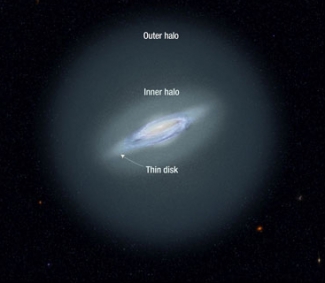The first results are in from a new search for the axion, a hypothetical particle that may constitute dark matter. Researchers in the Haloscope At Yale Sensitive to Axion Cold Dark Matter (HAYSTAC) recently looked for evidence of the axion, but so far they have found none in the small 100 MHz frequency range between 5.7 and 5.8 GHz.
The experiment relied on the Lehnert group’s microwave circuits, which performed as well as the laws of quantum mechanics allow. The group’s circuits are among the most sensitive devices ever made.
“Did we find an axion?” Lehnert said. “ No, but we found where it isn’t.” However, there are other many other frequencies where axions could still be detected.
The axion is a hypothetical particle that could make up “dark matter.” Dark matter constitutes more than 80% of the mass in the Universe, including the halo surrounding our Milky Way Galaxy. No one knows for sure what dark matter is made of, but if dark matter is made up of axions, the Lehnert group and its collaborators at Yale University, the University of California, Berkeley, and Lawrence Livermore National Laboratory have a method for detecting them in the laboratory. To do so, however, requires that the researchers look in the exact microwave frequency range determined by the mass of the axion particles, which could exist in a wide range of ultrasmall masses.





